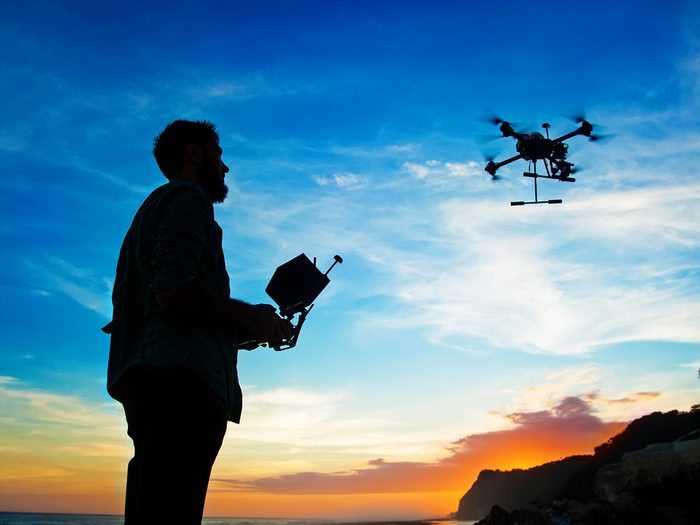
Drone laws in Canada
Before you take to the sky, you’ll need to register your drone with Transport Canada, carry a valid drone pilot certificate and be at least 14 years of age (unless it’s a toy drone and weighs less than 250 grams). Flying an unregistered drone, or operating one without a certificate, can result in fines of up to $1,000—or up to $5,000 for corporations that break the rules.
Of the more than 337,468 drones in Canada, around 74 percent are used purely for fun. Some countries require third-party liability insurance, and in Europe, users must be at least 16, and drones are banned from flying in urban areas.
To learn more about drone laws and other facts about unmanned aerial vehicles (UAVs), read on.
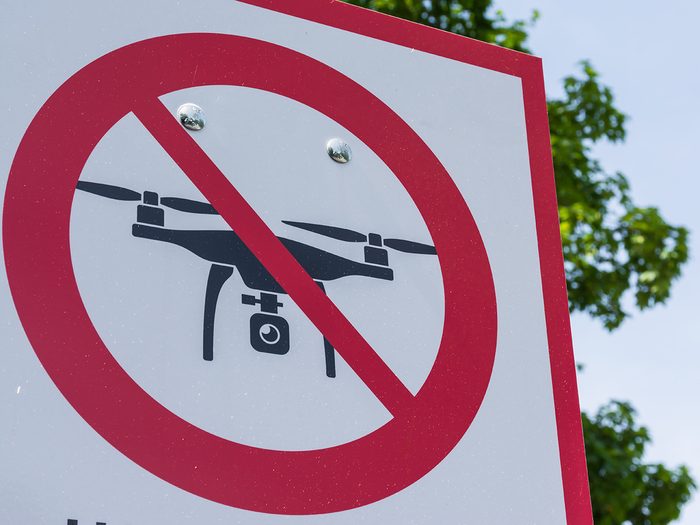
“No-fly” zones
GPS tracking prevents drones from entering “no-fly” zones, such as airports and government facilities. The drone will either automatically turn around and go back to the user or land itself. If a drone has been illegally modified to enter a no-fly zone, it could be shot down by authorities or electronically “jammed” so it falls out of the sky. The user could face a hefty fine or even imprisonment.
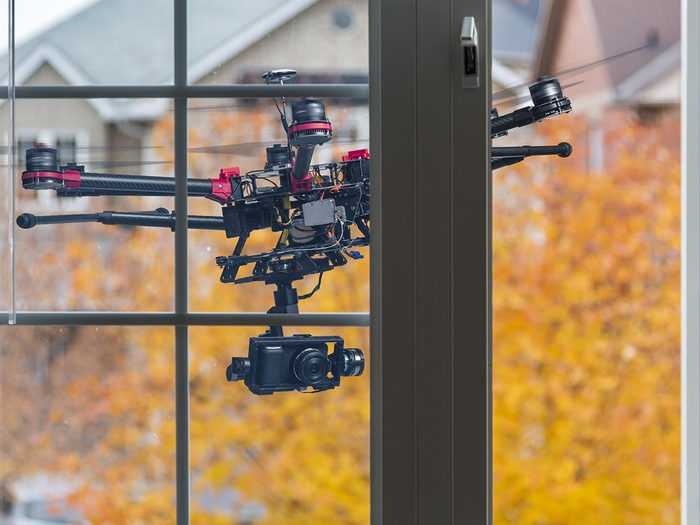
Privacy laws
Be cautious about flying a drone over private residential property: Residents have a right to privacy, meaning drones should not be used to hover near or peer into windows. If you believe you’re being recorded by a drone, report it.
Not surprisingly, celebrities have become targets of “paparazzi drones.” In 2020, Prince Harry and Meghan Markle led a lawsuit against paparazzi for flying a drone above their California home and capturing photos of their son.
(These 10 Canadian hotels have hosted royals.)
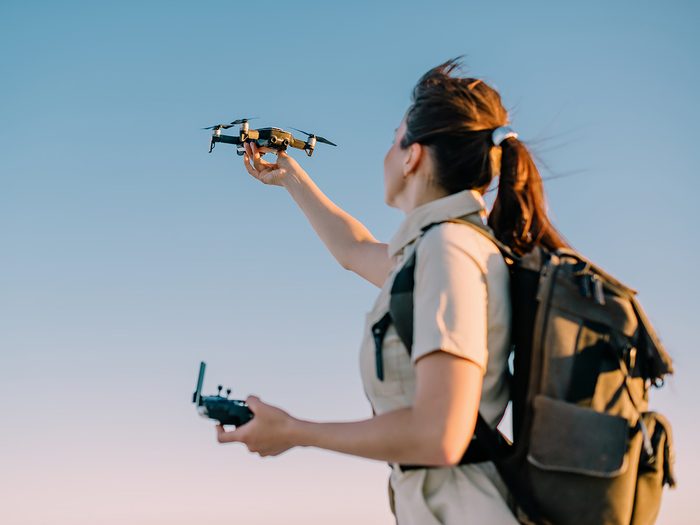
The earliest drones
Drones, or unmanned aerial vehicles, may seem like recent technology, but the earliest iteration took flight in 1849, during the First Italian War of Independence. An Austrian artillery lieutenant, Franz Von Uchatius, used pilotless balloons packed with explosives to attack Venice. The attack was mostly unsuccessful; some balloons even blew back to Austria.
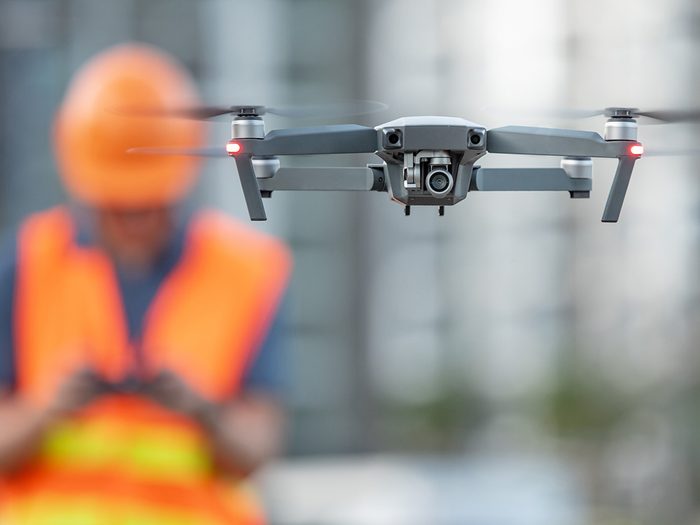
The father of UAVs
Abraham Karen, (the “Dronefather”), a Baghdad-born, Israeli-raised engineer, built the first modern drone for reconnaissance during the Yom Kippur War, in the early 1970s. After immigrating to the United States, Karem went on to design the MQ-1 Predator drone, which fired its first combat missile over Afghanistan in October 2001, transforming the strategy and tactics of military combat.
Today, drones play a pivotal role in the Russia-Ukraine war. In addition to being used for reconnaissance, combat drones have struck both Moscow and Kyiv. Drones have also been used to drop food and medical supplies to Russian-occupied territories in Ukraine.
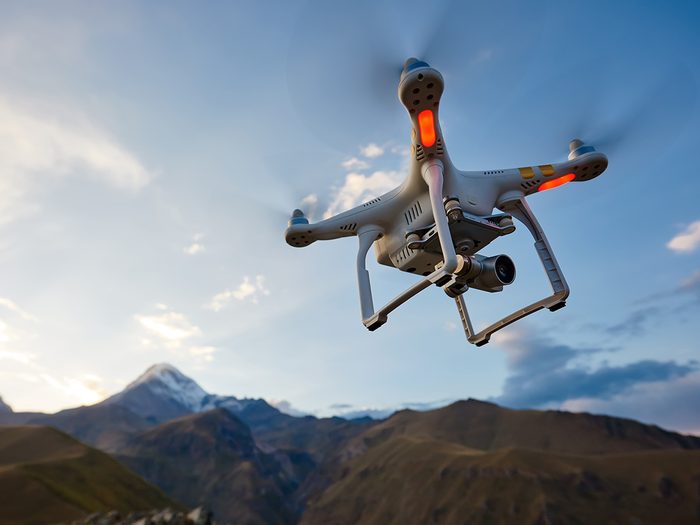
Quadcopters
Military drones resemble small airplanes and can cost more than US$15 million, but mini versions (sometimes called “quadcopters”) look more like small helicopters and are available at retailers like Amazon and Walmart for as little as $40. Most are remotely operated via either a controller or a smartphone app, but some models can fly autonomously thanks to GPS, sensors, software and cameras that help them avoid obstacles.
(Check out these ideas for gifts under $50.)
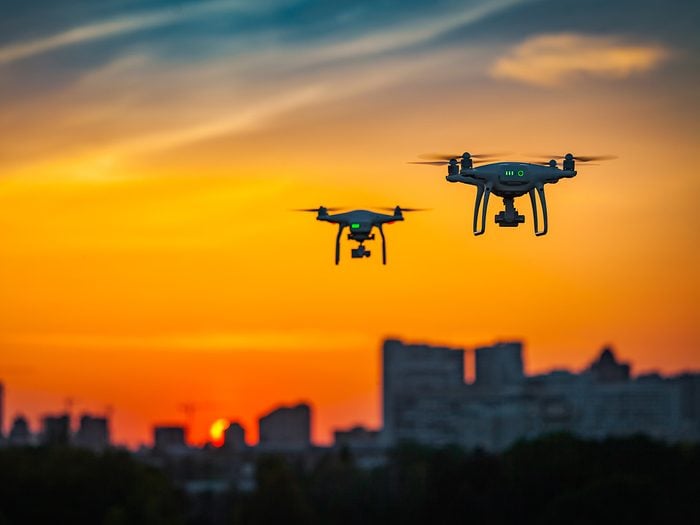
Drone racing
People now race drones just like they do cars—but the speeds are far faster. Some drones can go from 0 to 145 kilometres per hour in less than one second! The first “World Drone Prix” was held in Dubai in 2016. A teen from the United Kingdom won the US$250,000 grand prize after manoeuvring his drone through 12 laps of the 780-metre course the fastest.
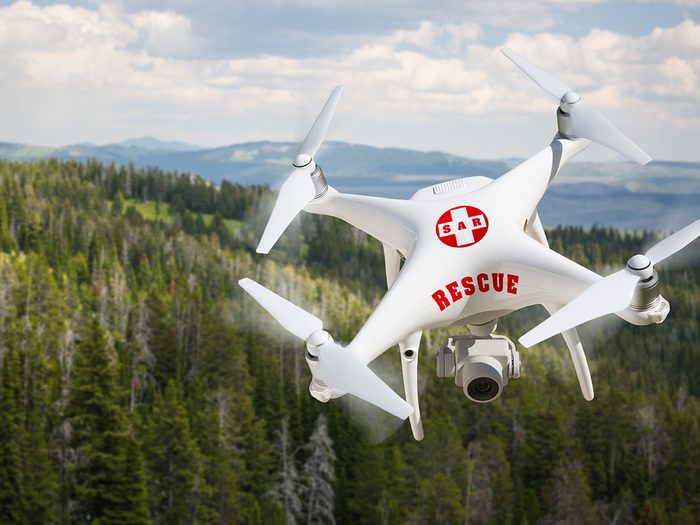
Search-and-rescue
Using cameras, along with sensors that can detect body heat, search-and-rescue drones help locate missing people and animals. They’re used in hard-to-reach areas such as a dense forest or mountainous ski hill, and can even search under rubble in the aftermath of a natural disaster—as was the case in Turkey following the magnitude-7.8 earthquake earlier this year.
(Here are the 25 best thrillers on Netflix Canada right now.)
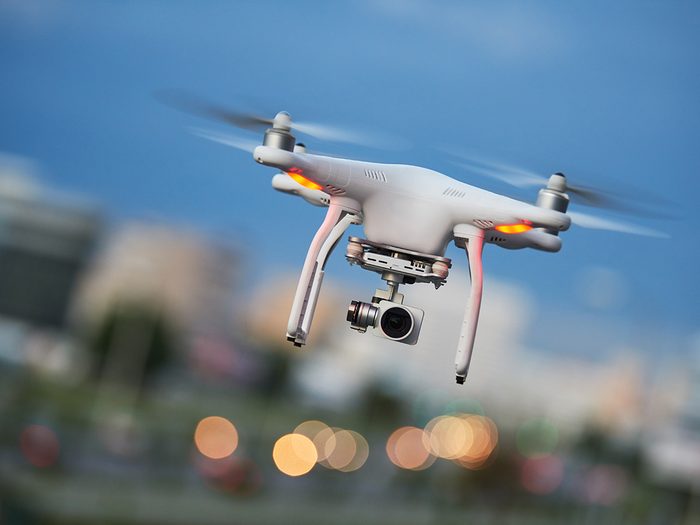
Use in policing
Drones also help authorities nab criminals. In 2016, authorities in Alameda, California, used a drone to track a suspect and record video of them discarding drugs and guns, which led to their arrest. Wildlife conservationists are also using them to catch elephant and rhinoceros poachers in Botswana, Malawi, South Africa and Zimbabwe.
(Meet the woman who’s helping save Thailand’s elephants.)
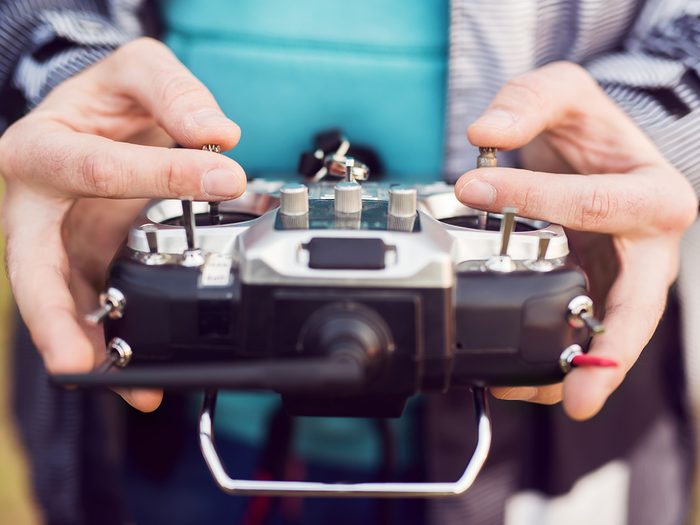
Smuggling via drone
But sometimes it’s criminals who are using the drones. In 2022, 20 people were arrested for using drones to smuggle contraband, including drugs, weapons, cash and cellphones, into Lee Correctional Institution in Bishopville, South Carolina.
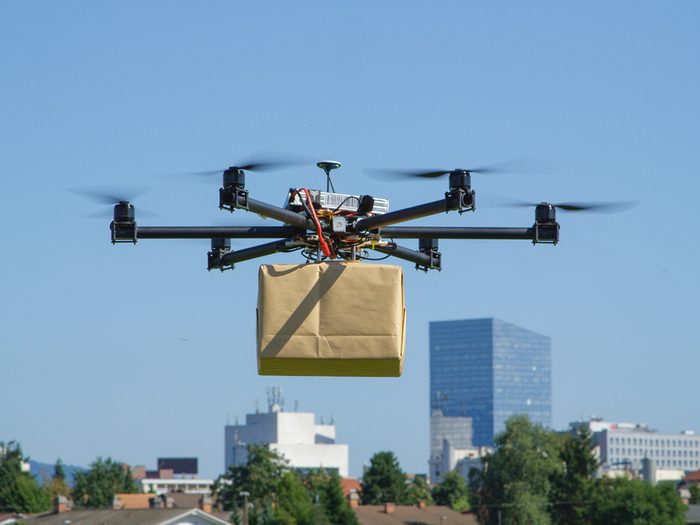
Delivery helpers
A drone may one day deliver your online order to your balcony or doorstep. Delivery drones are being tested in Canada, the U.S., the U.K., Europe and Australia. In 2021, a company called Drone Delivery Canada was used to deliver pharmaceuticals and Covid-19 tests between British Columbia’s Village of Fraser Lake and Stellat’en First Nation.
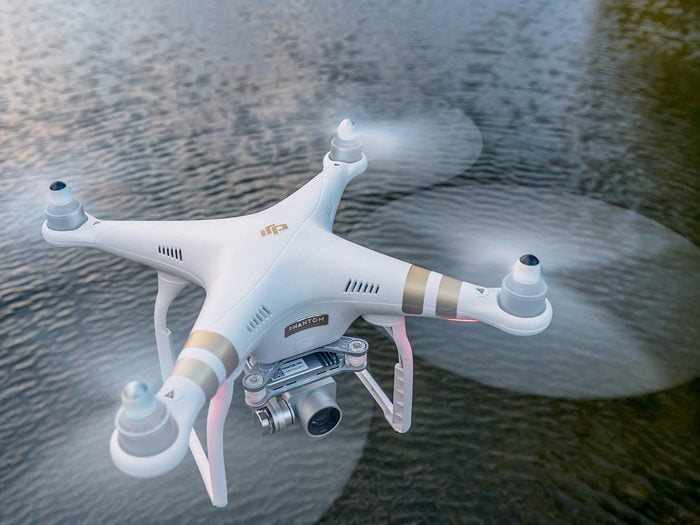
Drones in conservation
Not only are drones a more environmentally friendly delivery method—most small drones are powered by batteries—but they can help the planet in other ways, too. Conservationists and researchers are using them to monitor endangered species, and the Great Barrier Reef Foundation used them to conduct a census of green turtles. Meanwhile, in Canada, a start-up called Flash Forest is using drones in an effort to reforest areas of the country that have been devastated by wildfires. During flight, these drones drop tree “seed pods” across landscape that’s too dangerous for humans to traverse.
Some theme parks are even using drones to put on spectacular, gunpowder-free “firework” shows.
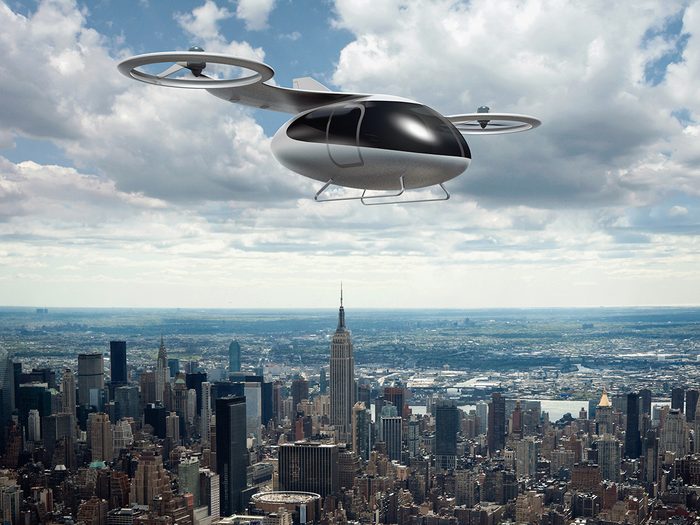
Passenger drones
Soon enough, we might be flying in drones ourselves! The first “passenger drone” was unveiled in 2016 by EHang, a Chinese company. It’s still going through rigorous testing. Perhaps one day we’ll take one to work and fly over rush-hour traffic—without needing a pilot’s licence.
Next, check out these train facts that’ll awaken your inner railfan.